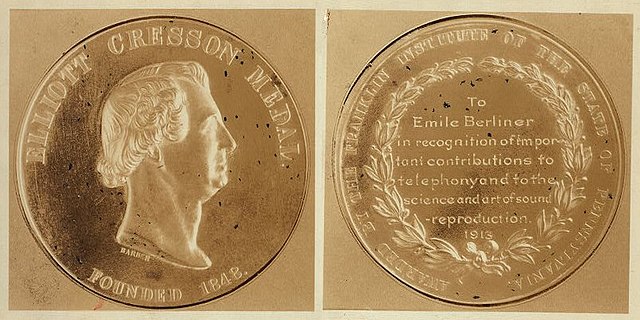Frederic Eugene Ives was a U.S. inventor who was born in Litchfield, Connecticut. In 1874–78 he had charge of the photographic laboratory at Cornell University. He moved to Philadelphia, Pennsylvania, where in 1885 he was one of the founding members of the Photographic Society of Philadelphia. He was awarded the Franklin Institute's Elliott Cresson Medal in 1893, the Edward Longstreth Medal in 1903, and the John Scott Medal in 1887, 1890, 1904 and 1906. He was elected to the American Philosophical Society in 1922. His son Herbert E. Ives was a pioneer of television and telephotography, including color facsimile.
Frederic Eugene Ives
An Ives Kromogram issued in 1897
Ives inserting a Kromogram into a Junior Kromskop, circa 1899
The Elliott Cresson Medal, also known as the Elliott Cresson Gold Medal, was the highest award given by the Franklin Institute. The award was established by Elliott Cresson, life member of the Franklin Institute, with $1,000 granted in 1848. The endowed award was to be "for some discovery in the Arts and Sciences, or for the invention or improvement of some useful machine, or for some new process or combination of materials in manufactures, or for ingenuity skill or perfection in workmanship." The medal was first awarded in 1875, 21 years after Cresson's death.
Elliott Cresson Medal given to Emile Berliner in 1913




